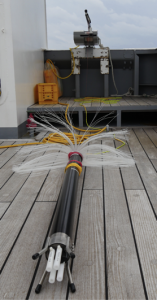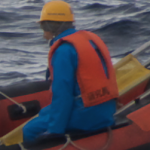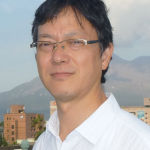Takeyoshi Nagai
Mechanisms of dominant vertical high wavenumber near inertial shear and strong turbulence in the Okinawa Trough and the Tokara Strait
Research Summary
The Kuroshio, a western boundary current in the North Pacific, starts from off Philippines Islands, and flows off Taiwan, through the Okinawa Trough and the Tokara Strait, before reaching the Honshu. A warm streak visible from satellites looks exactly like a bloodstream, which might let us consider it plays an important role in sustaining the ocean ecosystem. However, the surface Kuroshio water is known to be nutrient poor, and so amount of phytoplankton, which photosynthesizes to grow using light and nutrients and is eaten by zooplankton, is small. On the other hand, in dark subsurface layers, recent studies have revealed that the Kuroshio transports a large amount of nutrients from south to north. But this nutrient is not available for photosynthesis unless they are brought up to the sunlit surface layer. One of the physical processes, which can transport nutrients to the surface layer, is turbulent mixing. Turbulence induces the three-dimensional eddies of various sizes. The large turbulent eddy breaks into smaller and smaller eddies until the motion is stopped by the fluid viscosity. Without noticing, you are experiencing and utilizing turbulence to mix fluids in your daily life, when you stir the cup of coffee with milk, and when you mix the hot water in the bathtub, etc. Through the three-dimensional turbulent stirring, water and many kinds of tracers can be mixed vertically.
If turbulence occurs in the subsurface layer of the Kuroshio, induced mixing can diffuse up the nutrients to the sunlit surface layer. Because the Kuroshio has to go through the Tokara Strait, where many seamounts and islands are located, turbulence is expected near these topographic features (Figure 1). Although the previous observations for the current in the upstream region suggested that low frequency internal waves (near-inertial internal waves) with small vertical wavelength of less than 100 m dominantly propagate the regions, which are suggestive of the strong turbulent mixing, direct turbulence observations in the Tokara Strait are very rare. To investigate how the turbulence occurs in the Tokara Strait, tow-yo turbulence surveys, which allow us to obtain laterally high resolution vertical section of the turbulent intensity, are conducted in the previous OMIX project of the authors (Photo 1). The results show that the dominant near-inertial internal waves with small vertical wavelength are propagating in the region. More importantly, these near-inertial internal waves generate banded layers of strong turbulence clearly associated with bands of large velocity vertical gradient caused by the near-inertial internal waves (Figure 2). However, how and where these near-inertial internal waves are generated are not clear. In this study, we use tow-yo turbulence profiler and numerical models to investigate (1) where these near-inertial internal waves are generated, (2) how and where these near-inertial waves break into turbulence, (3) how the Kuroshio involves with the internal wave generation, propagations, and dissipation, (4) how much influence can be expected by the induced turbulent mixing on the water mass modification and nutrient supply.
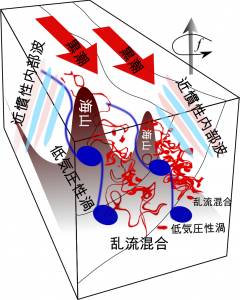
Figure 1: (Right)Topography in the Tokara Strait and observation lines. (Upper)Vertical gradient of measured horizontal current [s-1]. (Lower) Measured turbulent kinetic energy dissipation rates [Wkg-1]
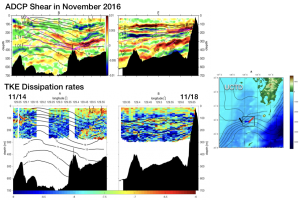
Figure 2: Schematics of the turbulence, internal waves, and eddies, generated by the Kuroshio flowing over seamounts in the Tokara Strait
Principal Investigator:
Takeyoshi Nagai
Assistant Professor, Tokyo University of Marine Science and Technology, Department of Ocean Sciences, Physical Oceanography
Collaborator:
Ryuichiro Inoue
Senior Scientist, JAMSTEC, Physical Oceanography
http://www.jamstec.go.jp/souran/html/Ryuichiro_Inoue003220-j.html
Collaborator:
Hirohiko Nakamura
Associate Professor, Faculty of Fisheries, Kagoshima University, Physical Oceanography
http://www.fish.kagoshima-u.ac.jp/aqua/staff/nakamura/nakamura.html
